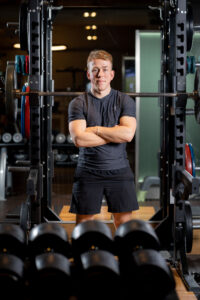Pretty much everyone wants to have six-pack abs. It’s one of the most common fitness goals and can often be the driving factor behind trips to the gym. That drive to look shredded on the beach can be immensely powerful. Yet the process in reaching this goal can often be misunderstood and the first thing a lot of people do is perform as many sit ups as they can. Is this the right way to go? No. Here’s why.
The first thing to remember is that we all have abs. It is part of the make up of our body. So, when you see titles such as ‘get abs now’, don’t read much into them because we already have abs. Yet one of the key reasons why some people’s abs are more visible than others is largely down to body fat levels – if this is high and it is covering your core, you are not going to see those abdominal muscles.
However, if you reduce your body fat levels, then your abs will be more visible – even more so as you get even leaner. So, the bottom line is that if you want your abs to be on show, then you first need to prioritise lowering your body fat levels.
Yet the real question remains: do we still need to train our core? There can be multiple answers to this question but, essentially, if you want your abdominal area to be thicker, then yes, training core in isolation will accelerate the process. But this should not take priority over your weight training and getting the body stronger because, when you train your whole body, get stronger and lift heavier, particularly with compound movements, your core gets stronger too.
This is due to the fact that when you do the heavy, demanding movements, you are working multiple parts of your body. This includes your core because they are stabilising you throughout the movements and becoming engaged, therefore under tension too. This is essential not only for building a thicker core, but also for stronger stability and balance, which can be extremely useful not just in the gym, but in tasks or activities outside of that too.
There are also other benefits when it comes to prioritising strength over abdominal training, one of which is injury prevention. Ultimately, stronger glutes, hamstrings, lower back muscles ultimately mean a greater resistance to high impact collisions and lower occurrence of muscle injuries. This is why exercises such as barbell squat, deadlift, Romanian deadlift and barbell row are so great – they work multiple muscle groups at once and help your whole body become stronger. By contrast, training the core in isolation is not going deliver these benefits. It will only be useful for making your abdominal muscle thicker.
Another benefit of prioritising strength with compound movements is that they are the exercises that burn the most calories. What do you think is going to be more demanding on the body: an ab crunch or a heavy squat? The answer is obvious. A heavy squat is going to burn more calories simply because the body is working harder during the rep due to the weight of what you are lifting.
In addition, as mentioned before, multiple muscle groups are at work, including your core anyway, at this is only going to bring far more value to your sessions. This is particularly important when it comes to the key aforementioned point about showing off your abs – you need to reduce your body fat levels to see them first. And when you are aiming to do that through being in a calories deficit, lifting heavy during compound movements are going to be essential due to their massive calorie burning qualities.
So, is core training absolutely essential? No, because if you perform those heavy compound movements and focus on getting stronger, your core is going to be indirectly trained anyway – this is the priority. However, if you wanted to make your abs thicker and even more visible, then a core session of 3-5 exercises is a good idea.
Ideally, you should do this session on rest days, as your body is recovering from the more demanding sessions previously and is not going to be affected with a less intense core session. In my training programmes, I give core training as an option for my clients, simply because it is not entirely necessary and there are far more essential things to improve on.
Yet for those who do want to perform core training sessions to make their abs thicker, exercise selection is going to be important. Doing things like endless crunches does not actually build your core due to it not being especially challenging and instead puts strain on your lower back. However, exercises like the hanging knee raise and the reverse crunch are excellent because of how challenging they are and how much tension they place on the abdominal area, which is key to strengthening your core.
When you do a core session, you should always start with these movements as they are the most challenging to perform, similar with compound movements on weight training days. After that, exercises such as the medicine ball crunch, ab rollout and the bodyweight plank provide good isolation work which targets all areas of your core.
At first, some of these exercises will seem difficult but the better you get at performing them and the stronger you become in this area, the more control you will have during the exercise and therefore maximum tension will be placed on the abdominal area.
So, in summary, you do not need to do core training. Instead, focus on getting stronger through performing compound movements during your weight training sessions for the reasons mentioned. However, even though your core is being indirectly trained during these exercises, if you want to make your abs even thicker, then doing a core session once per week, on a rest day ideally, is going to be beneficial for that goal.
Photo Credit: Envato Elements


